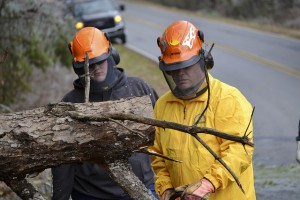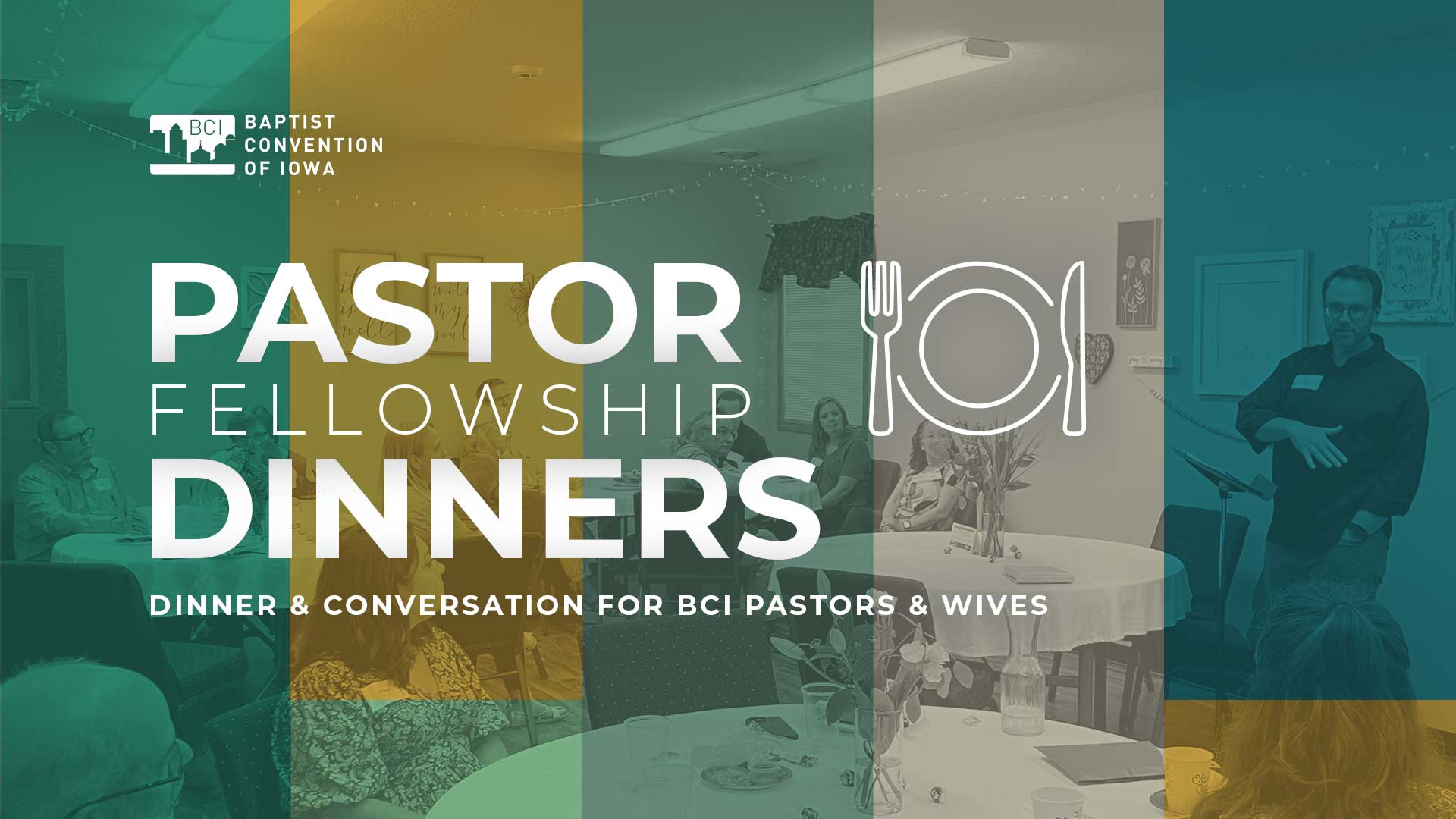By Kristen Camp

North American Mission Board Readiness Director for Disaster Relief Dan Yackel (right) cuts away frozen tree limbs with the assistance of SBDR volunteer Benjamin Wilson. Georgia Baptist Convention Disaster Relief teams assisted the Forsyth County Emergency Management Agency in removing downed trees from roadways, bridges and power lines in response to winter storms that gripped the eastern United States the week of Feb. 16. NAMB photo by Hunter Lewis
ALPHARETTA, Ga. – Roads froze, trees fell and thousands of homes and businesses lost power as record-breaking, freezing temperatures swept through the southeast this week. Lynchburg, Va., dropped to 11 below zero Friday morning, setting an all-time record low. Lynchburg was joined in the record book by places like Louisville, Ky., Evansville, Ind., Ashville, N.C., and many others.
After a Feb. 15-16 ice storm in parts of North Georgia, the Forsyth County Emergency Management Agency reached out to Southern Baptist Disaster Relief (SBDR) of the North American Mission Board (NAMB) to recruit a team to help clear fallen trees assisting the agency in restoring power to local residents.
SBDR deployed a chainsaw unit in response to the call and partnered with the Disaster Relief Director of the Georgia Baptist Convention (GBC), Stewart Lang, who deployed a team with trained volunteers to assist in responding to the disaster.
“By partnering with Forsyth County Emergency Management and with the GBC, we are able to provide help, healing and hope to this community,” said Dan Yackel, Readiness Director for Disaster Relief at NAMB.
The SBDR and GBC teams have been working closely with Forsyth County road and bridge units as well as local power companies to clear trees and limbs from roads and power lines across the county.
In addition to Forsyth County residents, the SBDR team is also working to help bring some relief to the county workers.
“These guys are tired and working 12-hour shifts in temperatures well below freezing. So we’re happy to do our part to help them out in any way we can,” said Yackel.
After being able to clear a large amount of debris from roads and power lines since Tuesday, the SBDR unit and their partners started on Thursday to shift some of their focus to clearing larger trees from local residents’ driveways and properties.
This type of extreme weather is a reminder of the need for disaster preparation. NAMB SBDR provides a strategy for this through Ready Church.
“Our Ready Church initiative is about being prepared for all disasters,” Fritz Wilson, executive director for SBDR at NAMB. “The reason for churches and Christians to be prepared is that when we are prepared, we can better cope with the situation and minister to our neighbors. Churches can connect with a local SBDR director to learn more about how you can be prepared when a storm, or any kind of disaster, hits close to home.

The Forsyth County, Ga., Emergency Management Agency requested assistance from Southern Baptist Disaster Relief in response to the winter storms that hit the area the week of Feb. 16. North American Mission Board Readiness Director for Disaster Relief Dan Yackel (left) cuts away frozen tree limbs with the assistance of SBDR volunteer Benjamin Wilson (center) and another volunteer. Volunteers from the Georgia Baptist Convention also responded to assist the county in clearing roadways and power lines to speed the restoration of power to residents. NAMB photo by Hunter Lewis
SBDR leaders want to enable churches to prepare, connect and respond within their local context. Through the Disaster Relief network, both national and international, Southern Baptists are able to respond with full support to crises of all sizes. Ready Church empowers people to best connect with their community in these times of need to spread the gospel.
For more information on how you can become prepared visit baptistrelief.org.
Those wishing to donate to
NAMB coordinates and manages Southern Baptist responses to major disasters through partnerships with 42 state Baptist conventions, most of which have their own state Disaster Relief ministries.
Southern Baptists have 65,000 trained volunteers—including chaplains—and 1,550 mobile units for feeding, chainsaw, mud-out, command, communication, child care, shower, laundry, water purification, repair/rebuild and power generation. SBDR is one of the three largest mobilizers of trained Disaster Relief volunteers in the United States, along with the American Red Cross and The Salvation Army.
Kristen Camp writes for the North American Mission Board.






